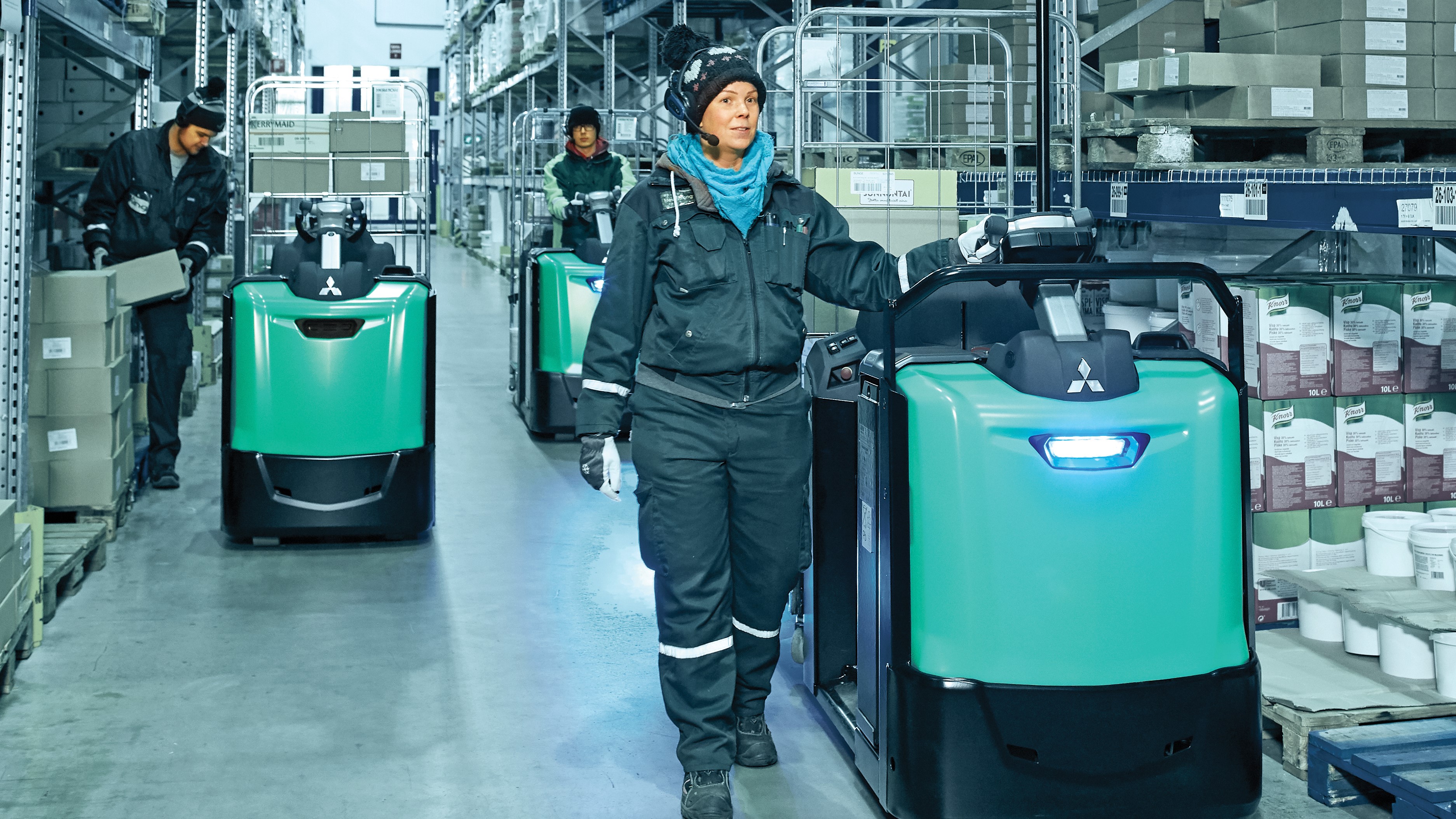Cold, frozen, and chilled operations are essential in modern logistics, but they come with unique challenges. Sub-zero temperatures can drive down efficiency and drive up costs. However, with the right equipment and planning, businesses can thrive in these demanding environments.
Choosing the right equipment for cold stores
Investing in equipment designed for extreme cold is crucial. A common mistake is opting for a lower-cost solution that ultimately fails to perform under difficult conditions, leading to higher costs in the long run.
Key features to look for:
- High-capacity batteries: Standard batteries struggle in freezing temperatures, leading to shorter runtimes and lower forklift uptime. Cold store-compatible batteries provide more consistent performance and longevity.
- Climate-controlled cabins: A comfortable operator is a productive operator. Heated cabins improve morale, reduce fatigue, and maintain efficiency during long shifts.
- Durable construction: Forklifts operating in cold storage require high-quality steel and superior welding to withstand sub-zero temperatures. Inferior materials can become brittle and lead to costly failures.
- Optimised trucks: Mitsubishi electric trucks are available in cold store variants, ensuring reliable performance in temperatures as low as -35°C. Some modifications may be necessary depending on the specific conditions of your site.
battery management and charging strategies
Proper battery care is essential for maintaining uptime in cold storage facilities.
Key considerations:
- Correct charging procedures: Ensuring batteries are charged in temperature-controlled environments to extend lifespan.
- Fast-charging solutions: Multi-shift operations benefit from rapid charging options that minimise downtime.
- Lithium-ion vs lead acid: Lithium-ion batteries tend to perform better in cold environments, offering longer runtimes and faster charging.
operator safety and well-being
Cold storage environments can pose significant risks to operators, including fatigue, reduced dexterity, and even frostbite. Keeping workers safe and comfortable is essential for maintaining productivity and reducing the risk of accidents.
Best practices for operator safety:
- Thermal PPE: Ensuring operators have access to high-quality gloves, jackets, and boots designed for sub-zero conditions.
- Slip prevention: Implementing anti-slip flooring and regular maintenance to reduce the risk of ice build-up.
- Regular warm-up breaks: Encouraging short breaks in heated areas to maintain alertness and prevent cold-related fatigue.
the role of automation and telematics in cold stores
Automation and data-driven decision-making are becoming more prevalent in cold storage everyday.
Key benefits of automation and telematics:
- Fleet management systems: Real-time monitoring of forklift health and battery life ensures proactive maintenance.
- Automated storage and retrieval systems (AS/RS): Reduces manual handling and improves efficiency in frozen warehouses.
- Telematics solutions: Helps track usage data, identify inefficiencies, and reduce maintenance costs.
beyond the forklift: complete cold store solutions
Cold store operations are high-intensity, multi-shift environments that demand more than just reliable forklifts. Effective materials handling strategies can help reduce costs and increase efficiency.
Key considerations:
- Service support and coverage: Downtime in a cold store is costly. The right support plan ensures quick response times and expert maintenance to keep operations running smoothly.
- Cost control strategies: Cold store operations are expensive, with factors like increased truck downtime and operator inefficiency adding unexpected costs. Implementing a structured cost control plan helps keep expenses manageable.
- Efficient storage systems: Conventional pallet racking is common in frozen storage, but it often leads to wasted space. Solutions such as double-deep racking I can improve use of available space and reduce storage costs.
energy efficiency and cost reduction
Cold storage facilities consume significant amounts of energy. Proper efficiency strategies are critical for cost savings.
Ways to improve energy efficiency:
- Energy-efficient forklifts: Using trucks designed for cold store conditions can reduce overall power consumption.
- Optimised warehouse layouts: Reducing forklift travel distance and improving storage density helps minimise wasted energy.
- Integration with warehouse management systems: Data-driven insights can help optimise truck deployment and reduce unnecessary movement.
your time is money... literally
In such a demanding industry, your equipment supplier should be a partner, helping you find cost-saving solutions and maximise your output.
Mitsubishi Forklift Trucks has been supplying forklifts to the UK’s frozen sector for over 50 years. Our expertise has earned us recognition in the industry, including several Temperature Controlled Storage & Distribution (TCS&D) awards. We’re also proud members of the Cold Chain Federation.
All our electric warehouse trucks are available in cold store variants — from pallet trucks and stackers to reach trucks and VNA machines — ensuring that you have the right solution for the challenges of your environment.
Struggling with the challenges of cold store operations?
Call us on 0845 3713048 or fill in our contact form to learn more about how we can help.




